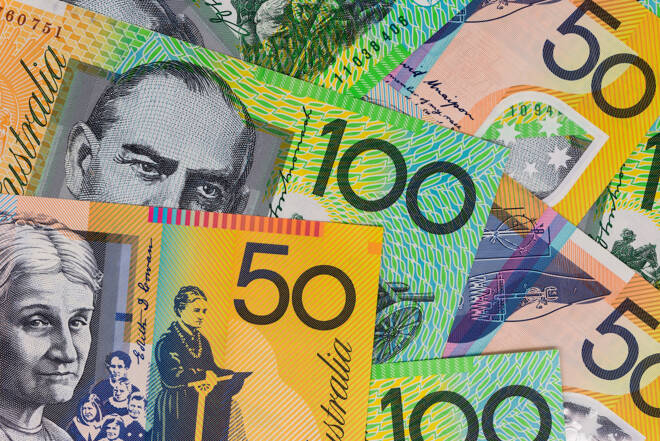Advertisement
Advertisement
AUD to USD Forecast: US Jobs Report and Aussie Spending Set to Move Markets
By:
Key Points:
- On Friday, July 5, the Australian monthly Household Spending Indicator will attract investor interest.
- Household spending trends can influence the Australian economy and the RBA rate path.
- Later in the session on Friday, the crucial US Jobs Report will also need consideration.
Will household spending trends align with the June retail sales report and bolster an RBA case for an August rate hike?
Aussie Household Spending an RBA Focal Point
On Friday, July 5, Australian household spending will put the AUD/USD and the RBA rate path in focus.
Economists expect the Household Spending Indicator to increase by 0.2% in May after a 0.1% rise in April.
Better-than-expected numbers may bolster the case for an August RBA interest rate hike. After the Monthly CPI Indicator, which signaled an Aussie inflation rate of 4.0%, the RBA would likely be sensitive to consumer spending trends.
Consumer spending can fuel demand-driven inflation and influence the RBA interest rate trajectory. An interest rate hike would increase borrowing costs and reduce disposable income. Downward trends in disposable income could adversely affect consumer spending and dampen demand-driven inflation.
Earlier this week, another private consumption metric raised investor expectations of an RBA rate hike. Retail sales increased by 0.6% in May after a lackluster 0.1% rise in April.
Will the RBA risk sending the Australian economy into a second recession in almost thirty years?
Private Consumption, Inflation, and a Hawkish RBA
In the June monetary policy meeting, the RBA discussed raising interest rates to combat inflation. Recent economic indicators, including retail sales and inflation, suggest the need for tighter monetary policy.
However, labor market indicators signaled a weaker labor market, which could affect wage growth and disposable income. ANZ-Indeed Job Ads slid by 2.2% in June, following a 1.9% decline in May, suggesting a slowdown in the pace of hiring.
Furthermore, weaker consumer spending could adversely impact the Australian economy.
While the Australian economy expanded by 0.1% in Q1 2024, private consumption rose by 0.4%. Higher interest rates would affect private consumption and possibly lead to an economic contraction.
While the experts have mixed views, the RBA could be more committed to bringing inflation to target at any cost.
Expert Opinions Remain Divided on an RBA Rate Hike
Westpac Chief Economist Luci Ellis recently discussed her views on the RBA rate path, projecting a first RBA interest rate cut in November.
Conversely, Bloomberg TV APAC Chief Markets Editor David Ingles said the recent inflation numbers increased the likelihood of a September rate hike to 50-50.
While investors consider the chances of an RBA rate hike, US economic indicators could fuel investor bets on a September Fed rate cut.
US Jobs Report Puts the Fed Under the Spotlight
Later in the session on Friday, the crucial US Jobs Report will attract investor attention.
Economists forecast nonfarm payrolls to increase by 190k in June and for the US unemployment rate to remain steady at 4.0%.
Significantly, economists expect average hourly earnings to increase 3.9% year-on-year in June after rising 4.1% in May. Wage growth will likely be a focal point.
On Tuesday, Fed Chair Powell warned that wage growth remained elevated, placing the spotlight on average hourly earnings. Hotter-than-expected wage growth figures and a steady US unemployment rate could sink investor bets on a September Fed rate cut.
For context, US average hourly earnings increased 4.4% year-on-year in January 2024 before falling to a 4.0% increase in April. The US dollar will react to the US Jobs Report and deviation from the wage growth forecasts.
Will today be the day that the US Jobs Report surprises the markets with a sharp deterioration in labor market conditions?
Short-Term Forecast: Bullish
Near-term AUD/USD trends hinge on the US Jobs Report. Weaker-than-expected wage growth could fuel investor bets on a September Fed rate cut. In contrast, with a hawkish RBA and hotter-than-expected Aussie inflation numbers, the RBA could raise interest rates in Q3 2024.
Considering the significance of the US Jobs Report, investors should monitor the news wires, real-time data, and expert commentary to manage trading strategies accordingly. Stay informed with our latest updates and insights to navigate the forex market effectively.
AUD/USD Price Action
Daily Chart
The AUD/USD sat comfortably above the 50-day and 200-day EMAs, confirming the bullish price trends.
An AUD/USD breakout from the $0.67500 handle would support a move toward the $0.67967 resistance level.
Aussie household spending and the US Jobs Report require investor consideration.
Conversely, an AUD/USD break below the $0.67003 support level could give the bears a run at the 50-day EMA.
With a 14-period Daily RSI reading of 64.28, the AUD could climb to the $0.67967 resistance level before entering overbought territory.
About the Author
Bob Masonauthor
With over 28 years of experience in the financial industry, Bob has worked with various global rating agencies and multinational banks. Currently he is covering currencies, commodities, alternative asset classes and global equities, focusing mostly on European and Asian markets.
Latest news and analysis
Advertisement
